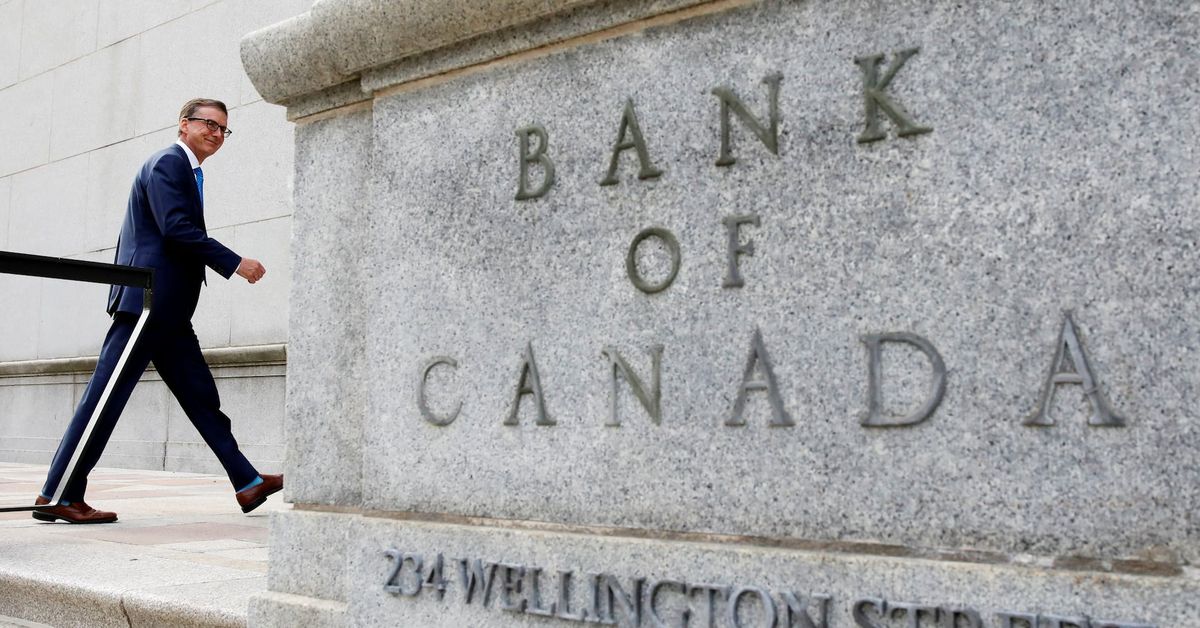
The Bank of Canada (BoC) is likely to move ahead of the U.S. Federal Reserve on its first rate cut, as tepid economic growth and cooling inflation are priming up conditions to ease borrowing rates sooner, economists and analysts said.
The Canadian central bank may also need deeper cuts in the current cycle, since the economy is much more sensitive to interest rates due to its household debt, which as a percentage of net disposable income is the highest among G7 countries, they warn.
Captioning in progress…
Usually, a strong economy south of the border is good news for Canada, since about three quarters of Canada’s international trade is knitted to the U.S. But with the Canadian economy clocking growth of 1% in the fourth quarter, compared with a 3.2% annualized increase in the U.S., the Bank of Canada may chart its own course.
“The Canadian economy has buckled under the pressure of higher interest rates… therefore, they can’t match the Fed,” said Simon Harvey, head of forex analysis at Monex, who expects a 25 basis point cut in June.
Money markets are pricing in a 70% chance of a quarter point cut at the BoC’s June 5 meeting, and bets for a cut at its April 10 gathering have risen to 20% since data last week showed an unexpected slowdown in inflation.
The Fed is widely expected to cut rates for the first time at its June 11-12 meeting.
Aggressive rate cuts could help lower the burden for Canadian consumers who are facing elevated costs of living amid mortgage, auto loan and credit card payments. About a fifth of Canadian mortgage holders are expected to renew their contracts next year and rate cuts could give them some relief.
At the same time, deeper and faster cuts could weaken the Canadian dollar, which risks reigniting inflationary pressures, forex analysts said.
Last week, the Swiss National Bank in a surprise move became the first major central bank to cut interest rates, due to easing inflation, a move that wrong-footed markets. Others are expected to follow.
In Canada, inflation fell to an eight-month low of 2.8% in February, while U.S. consumer prices posted a sharp jump, fueling expectations of a BoC lead over the Fed’s move.
“Headline and underlying inflation is a bit cooler in Canada, with the low-side surprise in February driving an even bigger wedge,” Douglas Porter, chief economist at BMO Financial Group, wrote in a note last week.
“We have long been of the view that the BoC will move ahead of the Fed,” he said.
Despite two back-to-back soft inflation prints, Bank of Canada Governor Tiff Macklem has said underlying price pressures in the economy still persisted and it was still too early to consider a cut. The bank’s key interest rate has been at 5.0% since July.
But whenever the Bank of Canada starts, economists and analysts said, the country would need deeper rate cuts than its neighbor.
“Canada is seen cutting more aggressively over a longer time frame,” said Karl Schamotta, chief market strategist at Corpay.







